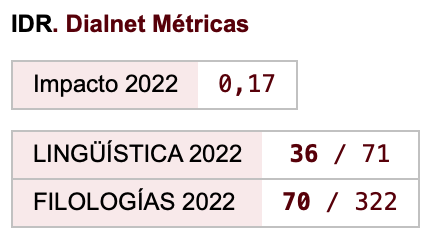Improving English Oral Skills through Pair Work and Peer-Peer Dialogue
Keywords:
classroom research, foreign language teaching-learning, tandems, PrimaryAbstract
The importance of the English language in today’s Education system is beyond doubt. Bearing in mind that the Spanish Educational Authorities and regulations advocate the Communicative Approach, this study shows the origin, evolution and results of an innovation project carried out in the English classes at the 4th, 5th and 6th grades of Primary in a state school in the autonomous community of Valencia (Spain). For that, the authors-teachers employed the methods of action research approach, pair work and peer-peer dialogue supported by the Communicative Approach and collaborative work.
The results will demonstrate the different advantages of employing pair work and peer-peer activities within the classroom not only to improve children’s English oral skills but also to contribute to their own personal growth and their development as social citizens.
Downloads
References
Baleghizadeh, S. (2009). Investigating the Effectiveness of Pair Work on a Conversational Cloze Task in EFL Classes. TESL Reporter, 42(2), 1-12.
Council of Europe (2001). Common European Framework of Reference for Languages. Cambridge: Cambridge University Press.
Crystal, D. (2003). English as a Global Language. Cambridge: Cambridge University Press.
Decreto 111/2007, de 20 de julio, del Consell, por el que se establece el currículo de la Educación Primaria en la Comunitat Valenciana [2007/9730]. July, 20th 2007. Diari Oficial de la Comunitat Valenciana, 5562.
Decreto 108/2014, de 4 de julio, del Consell, por el que se establece el currículo y desarrolla la ordenación general de la educación primaria en la Comunitat Valenciana [2014/6347]. July, 4th 2014. Diari Oficial de la Comunitat Valenciana, 7311.
Denscombe, M. (2010). The Good Research Guide: For Small-Scale Social Research Projects. Berkshire: Open University Press.
Equihua, L., Borja, V., Ramírez, A., & Treviño, A. (2011). Education under Product/Project Oriented Learning Technic, an Academic Experience Under Multidisciplinary and Collaborative Work Environment. INTED2011 Proceedings, 2504-2510.
European Commission (2005). Eurobarometer 231 – Wave 63.4. Retrieved from http://ec.europa.eu/public_opinion/archives/ebs/ebs_237.en.pdf
European Commission (2006): Special Eurobarometer 243 – 64.3. Retrieved from http://ec.europa.eu/public_opinion/archives/ebs/ebs_243_en.pdf
Gass, S., & Mackey, A. (2006). Input, Interaction and Output. AILA Review, 19, 3-17.
Gordillo Santofimia, L. M. (2011). Desarrollo de la comunicación oral en la clase de inglés. Revista digital: Innovación y experiencias educativas, 38, 1-9.
Lantolf, J. P., & Thorne, S. L. (2006). Sociocultural Theory and the Genesis of Second Language Development. Oxford: Oxford University Press.
Ley Orgánica 2/2006, de 3 de mayo, de Educación. May, 3rd 2006. Boletín Oficial del Estado, 106.
Morrow, K. (2012). Communicative Language Testing. In C. Coombe, P. Davidson, B. O’Sullivan & S. Stoynoff (Ed.), The Cambridge Guide to Second Language Assessment (pp. 140-146). New York: Cambridge University Press.
Rubio Alcalá, F. D., & Martínez Lirola, M. (2008). La comunicación oral del inglés en España: Influencia de los aspectos educativos y mediáticos en el éxito de aprendizaje. Porta Linguarum, 32, 51-63.
Sato, M., & Ballinger, S. (2010). Raising Language Awareness in Peer Interaction: A Cross-Context, Cross-Methodology Examination. Language Awareness, 21(1-2), 157-179.
Schmid, E. C. (2010). Developing Competencies for Using the Interactive Whiteboard to Implement Communicative Language Teaching in the English as a Foreign Language Classroom. Technology, Pedagogy and Education, 19(2), 159-172.
Storch, N., & Aldosari, A. (2013). Pairing Learners in Pair Work Activity. Language Teaching Research, 17(1), 31-48.
Susman, G. (1983). Action Research: A Sociotechnical Systems Perpective. In G. Morgan (Ed.), Beyond Method: Strategies for Social Science Research (pp. 95-113). London: Sage Publications.
Swain, M. (2000). The Output Hypothesis and Beyond: Mediating Acquisition through Collaborative Dialogue. In J. Lantolf (Ed.), Sociocultural Theory and Second Language Learning (pp. 97-114). Oxford: Oxford University Press.
Swain, M., Brooks, L., & Tocalli-Beller, A. (2002). Peer-Peer Dialogue as a Means of Second Language Learning. Annual Review of Applied Linguistics, 22, 171-185.
Taylor, L., & Wigglesworth, G. (2009). Ate Two Heads Better than One? Pair Work in L2 Assessment Contexts. Language Testing, 26(3), 325-339.
Watanabe, Y., & Swain, M. (2007). Effects of Proficiency Differences and Patterns of Pair Interaction on Second Language Learning: Collaborative Dialogue between Adult ESL Learners. Language Teaching Research, 11(2), 121-142.
Zeng, G., & Takatsuka, S. (2009). Text-Based Peer-Peer Collaborative Dialogue in a Computer-Mediated Learning Environment in the EFL Context. System, 37, 434-446.
Downloads
Published
How to Cite
Issue
Section
License
Authors who publish with this journal agree to the following terms:
- Authors retain copyright and grant the journal right of first publication with the work simultaneously licensed under a Creative Commons Attribution License that allows others to share the work with an acknowledgement of the work's authorship and initial publication in this journal.
- Authors are able to enter into separate, additional contractual arrangements for the non-exclusive distribution of the journal's published version of the work (e.g., post it to an institutional repository or publish it in a book), with an acknowledgement of its initial publication in this journal.
- Authors are permitted and encouraged to post their work online (e.g., in institutional repositories or on their website) prior to and during the submission process, as it can lead to productive exchanges, as well as earlier and greater citation of published work (See The Effect of Open Access).

Revista de Lenguas para fines específicos is licensed under a Creative Commons Reconocimiento-NoComercial-SinObraDerivada 4.0 Internacional License.























